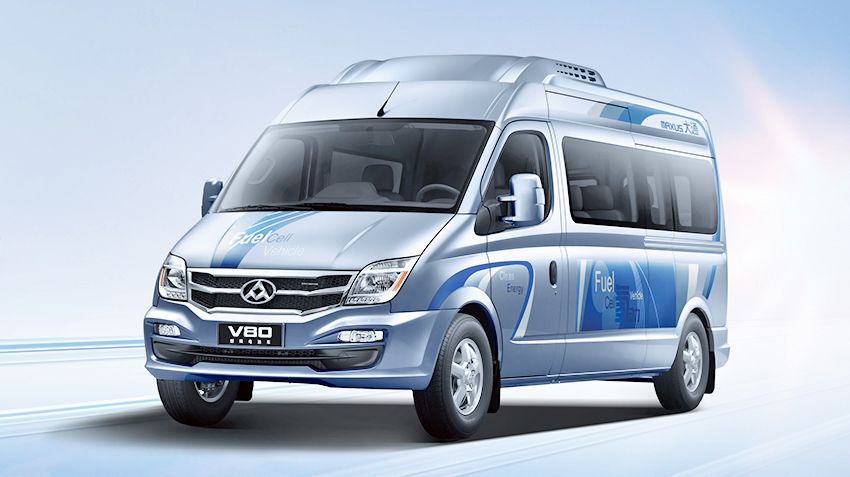Beijing puts the PEV subsidies at the regional level

16 October 2019
After 2022 subsidies for electric cars and hydrogen fuel cells should seek the provincial governments of the PRC
China's Ministry of Finance plans to roll by the end of 2021 subsidies for all electric vehicles (PEV), including hydrogen fuel cells (FCEV).
Such a big political decision of the Ministry announced last week in an open letter to the President of the Corporation is SAIC Motor Corp. Chen hung, so to speak, in response to his proposal to extend subsidies for FCEV after 2021, made at the annual meeting of the National people's Congress (legislative body of the PRC), held in March.
Confirming its plan to reduce subsidies on electric vehicles (BEV) and plug-in hybrids (PHEV) to the end of 2021, Beijing earlier still undecided as to what to do with the subsidies on electric cars for hydrogen fuel cell FCEV.
The current policy of subsidies led to "dependency" on grants among the "some" manufacturers of fuel cell vehicles, making it difficult for these companies in the global competition, said in a letter posted last week on the Ministerial website, however, without specifying the brands.
According to the Ministry, with the gradual cessation of subsidies by the Central Beijing government will encourage provincial governments to find incentives for the construction of quick charging batteries of electric vehicles and hydrogen fueling stations for vehicles on fuel elements.
The Chinese government began to curtail subsidization of PEV sales in 2019.
In accordance with the current subsidy program vehicles fuel cell passenger vehicles are entitled to a subsidy of 200,000 yuan ($28 369); LCV are entitled to a subsidy of 300,000 yuan ($42 553), while buses and trucks heavy-duty vehicles can receive subsidies of up to 500,000 yuan ($70 921).
According to the China Association of automobile manufacturers for the first three quarters of this year in China were sold 1251 units FCEV fuel cell different type, which is 7.6 times more than in the same period last year.
However, before this summer, industry representatives repeatedly spoke about the commitment of China to the development of transport systems with low carbon emissions, which from the beginning included in the FCEV roadmap. In particular, China was intended to accelerate the commercialization of FCEV technology and to invest in infrastructure of hydrogen filling stations. By 2020, China planned to increase the number of FCEV on their road to 10 000 units of This level were to be raised to 100,000 units by the year 2025, when due will appear in mass passenger FCEV. By 2030 China is planned to build across the country 1000 stations for refueling hydrogen. In fact, the FCEV has long enjoyed subsidies of Pravitelstva. However, in mid-2019, Beijing has significantly reduced subsidies for electric cars and completely stopped the subsidies provided by local governments. However, compared to BEV the most attractive feature of the FCEV is the fact that to refill its tank takes only a few minutes. Hydrogen Hyundai NEXO on one tank can travel a distance of over 600 kilometers. In places with good infrastructure, such as California (in 2012, there were only 14 hydrogen filling stations – ed.) The FCEV will certainly be attractive to consumers. However, China still lacks the basic infrastructure to make the FCEV attractive option for users from the public sector and for private consumers. Currently China has at least 20 filling stations with hydrogen, and 20 more are under construction. These fundamental restrictions make it extremely difficult release of the FCEV to the market of private vehicles. Such brands as Donfeng Motors, SAIC Motor, Jiangsu Aoxin New Energy Yutong Bus and are already active players on the commercial FCEV market. Companies Great Wall Motor and Changan are also investing in research and development of fuel cell systems. The recent steps of the Great Wall Motor for release in the hydrogen sector include the acquisition of Shanghai Fuel Cell Vehicle Company and investment firm H2 Mobility Deutschland (H2M). So, H2M is considered a leader in the construction and operation of filling stations with hydrogen. Chinese automaker expects to submit its first FCEV at the winter Olympics in Beijing in 2020.
Subsidies are granted to both local and national governments, and yet are crucial to the development of the hydrogen FCEV and infrastructure for refueling. In the report "Strategic horizons", published by the energy division of IHS, Markit, focuses on the potential of hydrogen as a basis of clean energy, States: "Hydrogen is still relatively expensive for any end use, and today can not compete with conventional fuels. However, as a source of energy with zero or low CO2, it can still be a viable option. Therefore, the future of hydrogen will depend on the political direction which will Orient the society on the achievement of lower emissions." In this process the local companies, of course, should be encouraged in the development and mastering of technologies for production, storage and development of fuel cells on hydrogen.
PS As they say here to you the grandmother and Jurev day! Ambitious plans of Beijing comes up against the breakwater not even economic recession, only a slowing of economic growth. And before the global crisis and close to... .
|
|
|
Element was not found.








